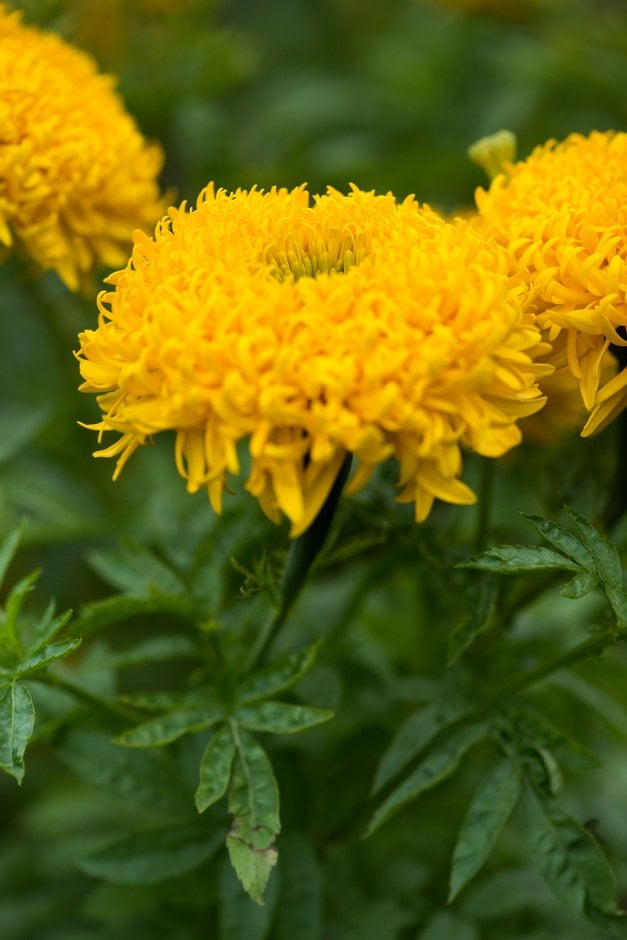Tagetes erecta
African marigold
A bushy annual from 50 to 120cm high with pinnate leaves divided into lanceolate leaflets up to 5cm long. Double flowers 5-10cm wide in shades of yellow, orange and white are produced from summer into autumn; both leaves and flowers are aromatic when crushed or brushed
Size
Ultimate height
1–1.5 metresTime to ultimate height
1–2 yearsUltimate spread
0.1–0.5 metresGrowing conditions
Moisture
Moist but well–drained, Well–drainedpH
Acid, Alkaline, NeutralColour & scent
| Stem | Flower | Foliage | Fruit | |
| Spring | Green | |||
|---|---|---|---|---|
| Summer | Orange White Yellow | Green | ||
| Autumn | Orange White Yellow | Green | ||
| Winter |
Position
- Full sun
Aspect
West–facing or South–facing or East–facing
Exposure
Exposed or Sheltered Hardiness
H2Botanical details
- Family
- Asteraceae
- Native to GB / Ireland
- No
- Foliage
- Deciduous
- Habit
- Bushy
- Potentially harmful
- Foliage may aggravate skin allergies. Wear gloves and other protective equipment when handling
- Genus
Tagetes can be annuals or perennials of upright growth, with strongly aromatic pinnately divided leaves and showy daisy-like, single or double flower-heads in summer and autumn
- Name status
Correct
How to grow
Cultivation
Grow in moderately fertile, well-drained soil in full sun; taller plants may benefit from staking
Propagation
Propagate by seed
Suggested planting locations and garden types
- Cottage and informal garden
- Patio and container plants
- City and courtyard gardens
- Coastal
- Low Maintenance
- Cut flowers
- Flower borders and beds
Pruning
Deadhead regularly to prolong flowering
Pests
Generally pest-free
Diseases
Generally disease-free but may be susceptible to powdery mildews
Get involved
The Royal Horticultural Society is the UK’s leading gardening charity. We aim to enrich everyone’s life through plants, and make the UK a greener and more beautiful place.
